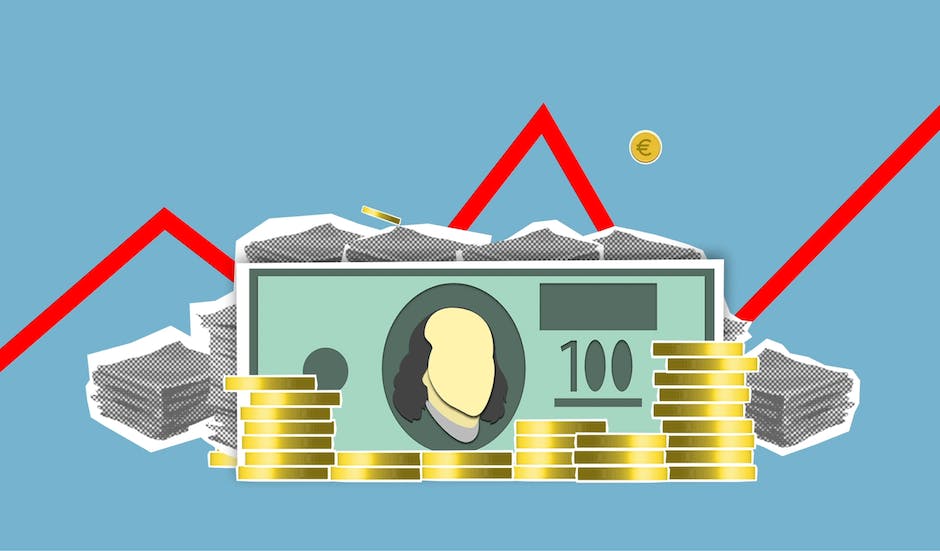Understanding the difference between revenue and profits is a very important aspect of business management and financing an entrepreneur needs to know.
This article aims to explain the complex dynamics between revenue and profits and their significance in the day-to-day activities of a business. It provides a comprehensive overview of how they are calculated, and why they serve as pivotal indicators of a company’s performance.
What is revenue in business?
Revenue is the total income generated by a business or a production firm from its core productions, without considering expenses. So, when you hear an entrepreneur mention revenue, think of it as their top line or gross income.

What are profits?
Profits represent the residual income that remains, after all, operating expenses, cost of production, and taxes have been deducted from revenue. Profit is the measure of a business’ bottom line or net earnings. While revenue is often referred to as gross income, profit is often referred to as “Net Income”.
When it comes to profits, there are three critical types you need to understand: gross profit, operating profit, and net profit.
Gross profit is the income left over after subtracting the costs directly related to producing the goods or services sold (known as cost of goods sold, COGS). For example, for a company manufacturing tables, the gross profit will be the sales revenue from the tables minus the cost of materials, labor, and overhead expenses directly used in the production of the tables.
Operating profit is the profit earned from a company’s normal operations, that is, revenue minus COGS and operating expenses. Operating expenses do not include taxes and interest charges, which are considered non-operating costs.
Net profit, also known as net income, is what remains of the revenue after all costs have been deducted, including both operating and non-operating expenses, taxes, and interest charges.
While regular revenue growth is essential for a business, if expenses escalate at a rate faster than revenue, the company may fail to be profitable. Alternatively, a company could have high profits despite slow revenue growth if it successfully manages to curtail costs.
For instance, consider a lemonade stand that made $100 in a day (the revenue). To make the lemonade, it spent $30 on lemons, sugar, cups, and other ingredients, and $10 on advertising, amounting to $40 in total costs. The profit then would be the revenue ($100) minus the expenses ($40), equating to $60. So, while the revenue was $100, the actual profit, the fundamental figure, was $60.
Calculating revenue and profits
Revenue, commonly known as the “top line,” is the first fiscal indicator to have a clear understanding about. It is the aggregate amount garnered from selling a product or providing a service before considering any costs or expenses. For instance, a clothing retailer that sells 1,000 unit of clothes at $50 each would generate a total revenue of $50,000.
Applying the revenue formula
To calculate the revenue, you only need two components: the price of the goods or services and the quantity sold. The formula is simple: Price x Quantity = Revenue. For example, if a bakery sells 500 loaves of bread at $4 each, the total revenue will be $2,000.
Understanding your profit
Profit, commonly known as the “bottom line,” is the money left after all costs, taxes, and expenses have been deducted from the total revenue. This is what the business actually takes home and can be used for reinvestment or distributed amongst shareholders.
Suppose in the above clothing retailer example, the cost to produce those clothes—factoring in material cost, labor, overheads, and others equaled $30,000. When you subtract this cost from the total revenue of $50,000, you are left with a profit of $20,000.
Breaking down the profit formula
To calculate the profit, you’ll need to subtract total costs from your total revenue. The formula would be: Revenue – Total Costs = Profit. Following our previous example with the bakery, if making those 500 loaves of bread cost $1,200, then the profit would be: $2,000 (revenue) – $1,200 (costs) = $800 (profit).
Different Costing Methods That Could Affect Your Profit
The profit margin can be significantly influenced by the costing method employed by the business. Costing methods help to allocate the expenditure incurred in the manufacturing process over multiple output units. Two popular costing methods are absorption costing and marginal costing.

In absorption costing, all costs (both fixed and variable) are allocated to produced goods. While in marginal costing, only variable costs are considered. Thus, the choice of the costing method can have dramatic effects on reported profit.
Difference between revenue and profits
Revenue and profit are two very important metrics in financial analysis, each representing different aspects of a company’s financial performance. Here are the key differences between the two using key factors such as components, purpose, income statement, and types:
Purpose:
While revenue is a measure of a company’s sales performance and market demand for its goods or services, profit is a measure of a company’s financial health and efficiency, indicating how well it manages its costs relative to its revenue.
Income statement:
Revenue is the top line of the income statement, but profits is the bottom line of the income statement.
Components:
Revenue only considers the total income from selling goods and services, but profit takes into account all costs associated with producing and selling those goods and services, including direct costs (like raw materials, labor), indirect costs (like rent, utilities), and other costs (like interest on debt, taxes).
Types:
Revenue in business can be divided into 1) operating revenue, 2) non-operating revenue while profit can be divided into three major types: 1) Gross profit: revenue minus cost of goods sold (COGS) and 2) Operating profit (or EBIT): gross profit minus operating expenses, not including interest and taxes, and 3) Net profit ( operating profit minus interest and taxes).
Takeaway: Revenue and profits are important metrics for evaluating a company’s performance and financial health.
Exploring Revenue Streams
A business may have several revenue streams, each contributing to the total revenue. For example, a software company might generate revenue from software sales, a subscription model, and providing ancillary services such as customer support or customization.
Analyzing Revenue and Profits Performance
Revenue and profits serve as two integral performance markers for a business. The term revenue signifies the complete sum of money a company accumulates from its various operations, prior to the deduction of any expenses. This is often called the “top line” due to its position at the start of a company’s income statement.
Profits come about when a company deducts its expenses, inclusive of goods sold, operational expenses, taxes, and interest, from its total revenue. This resultant figure, known as the profit, net income, or the “bottom line,” reveals important details about a company’s financial well-being.
The Impact of Revenue and Profit Trends on Business Stability and Growth

Increasing revenue over time could indicate a growing demand for the company’s products or services. However, if revenue continues to grow while profits continue to decline, then there could be a problem, which might suggest inefficiency.
A company’s growing profits signify operational efficiency and robust financial health, hence better prepared for future investments or to endure economic downturns. Conversely, declining profits over time, even in the face of increasing revenue, could signal potential trouble.
Conclusion:
Businesses can increase their revenue and profits through various strategies, including increasing sales volume, raising prices, reducing costs, or a combination thereof.
For instance, a company could boost sales by expanding its product offerings or entering new markets. Similarly, cost reduction can be achieved through process improvements that enhance operational efficiency or by negotiating better terms with suppliers. However, such strategies should be executed carefully to avoid detrimental impacts on product quality or customer satisfaction.

